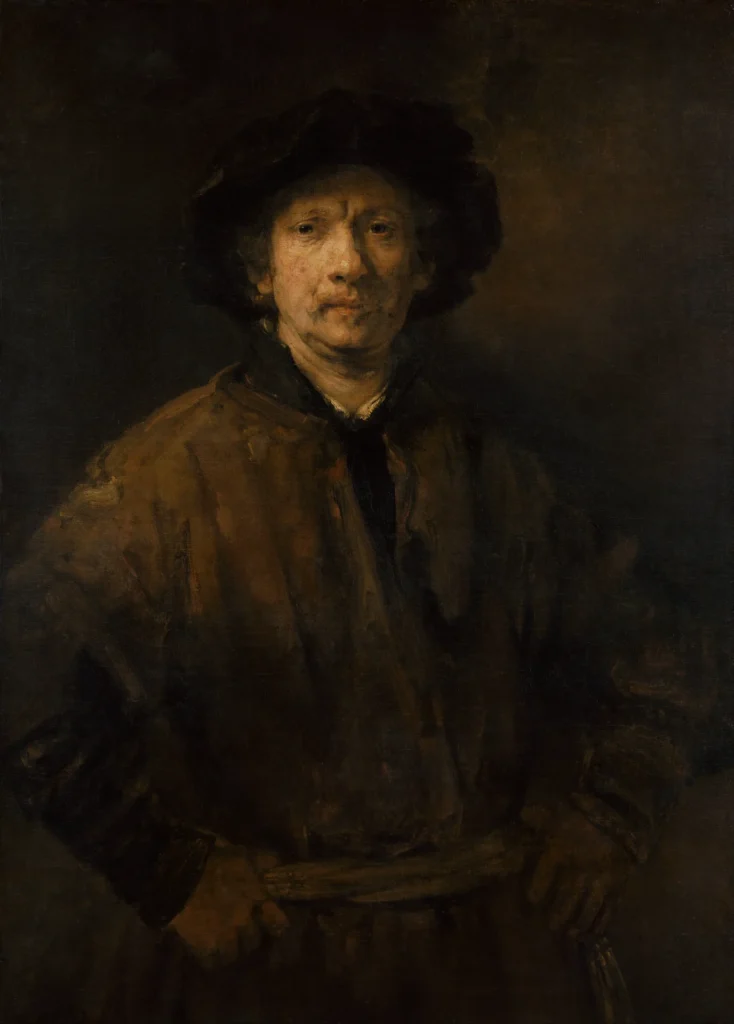Self-Portrait of Rembrandt Van Rjin(1657)
'Self-Portrait Aged 51' is a remarkable work by Rembrandt that encapsulates the painter's emotional and artistic turmoil during a challenging period in his life. Created in 1657, the portrait reveals the effects of personal tragedies, financial woes, and a deep introspection. With its dramatic use of light and shadow, the artwork invites viewers to engage with the artist's troubled psyche, offering a glimpse into his world through a stunning interplay of technique and emotion.
Year 1657
About the Artwork
This self-portrait was painted amidst significant hardships for Rembrandt, including the death of his beloved wife, Saskia, and the loss of a child, which left an indelible mark on his soul and artistry. Additionally, the burden of financial insolvency loomed large, drastically changing the course of his life. The painting showcases a pivotal moment where Rembrandt confronts his own vulnerability, revealing the intricate layers of his emotional landscape through powerful facial expressions and a haunting gaze. It serves as both a personal testimony and a testament to his masterful abilities in capturing the human condition.
Did You Know
Liked what you see? Add it to your collection.
Enjoyed reading? Share it.
... continued
Personal Context
By 1657, Rembrandt had experienced significant personal tragedies, including the death of his wife Saskia in 1642 and the loss of his daughter in infancy. Additionally, he had filed for bankruptcy in 1656 due to his extravagant lifestyle and financial mismanagement.
Artistic Style and Technique
The painting features Rembrandt's characteristic use of dark, deep brown backgrounds, which contrasts sharply with the light focused on his face. This lighting, coming from an unknown source, highlights his eyes and forehead, drawing the viewer's attention to his facial expression. The use of impasto technique on the areas around his eyes and forehead adds texture and expressiveness to the painting.
Emotional and Psychological Depth
The self-portrait conveys a sense of somberness and introspection. Rembrandt's face is furrowed with lines, and his eyes, though clear and expressive, hint at a deep-seated pain and weariness. The overall mood is one of contemplative maturity and a sense of resignation to the hardships he had faced.
Composition and Symbolism
The painting is relatively small, measuring 53cm by 44cm, which was likely a deliberate choice by Rembrandt to create an intimate and personal work. The composition is simple, with Rembrandt's upper half emerging from the dark background, forcing the spectator to engage directly with his gaze. The delicate hat and the rough, bearded face illustrate Rembrandt's ability to blend different artistic styles, such as the painterly aspects of Titian and the delicacy of Raphael.
Significance
This self-portrait is part of Rembrandt's extensive series of self-portraits, which collectively document his life and artistic development. The 'Self-Portrait Aged 51' stands out for its brutal honesty and emotional depth, capturing a moment of profound human experience and artistic introspection.









